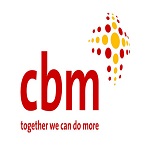
BULUK EYE CENTER
STATE MINISTRY OF HEALTH CENTRAL EQUATORIA STATE
DONOR CODE: AICS AID 012590/01/6
TERMS OF REFERENCE FOR DIABETIC RETINOPATHY STUDY IN JUBA COUNTY SOUTH SUDAN
Project Summary
Project Funding the Study: The Bright Sight: NTDs prevention and Eye Health Care for persons with disabilities and vulnerable groups
Country :South Sudan.
Region: Central Equatoria: County of Juba; Eastern Equatoria: Torit County; Lakes State: Center Rumbek County
Partner Organisation: Buluk Eye Center (BEC), CORDAID AND CUAMM
Duration of the Study: 15th June 2024 to 15th August 2024 (60 days)
Planned Budget: 20,000 USD Only
Study Purpose- To determine the prevalence of DR and identify the risk factors associated with DR (according to the types) among patients who are on follow up at Malakia and Gurei PHCCs – Central Equatoria State.
Commissioning organization/contact persons: CBM South Sudan Country Office- Country Director and Programme Development and Delivery Specialist.
Background and rationale
South Sudan is among the developing nations with a considerable burden of avoidable blindness. Globally it is estimated that out of a total of 1.1 billion people have vision loss, 90% live in low and middle-income countries and 90% of the vision loss in preventable and treatable. The prevalence of visual diseases is high in South Sudan. If at national level official data on Eye Health are scarce, also due to the lack of policies and practices that effectively include it among the indicators collected on a regular basis in local health centers, the most recent data available, collected in the 10 states of South Sudan, indicate that the prevalence of blindness is estimated at 4.1%, the prevalence of visual problems is 7.7%. The main causes of blindness are due to undiagnosed and untreated diseases such as cataracts (41.2%) and neglected tropical diseases (NTDs) such as trachoma (35.3%) and onchocerciasis; other visual pathologies present are: glaucoma, refractive errors and childhood blindness. Among the main causes of disability reported among the population with severe disabilities, visual diseases make up the majority, amounting to 23.5%, the most serious diseases, neither diagnosed nor treated, lead to blindness and disability. It is estimated that people with disabilities make up only 1% of all patients who have access to the public health system; although a part of them could not be identified as such, given the low diagnostic skills of the staff, a very low percentage remains, which raises alarm in terms of unexpected needs throughout the national territory.
The other significant blinding pathology is the Diabetic Retinopathy. Diabetic retinopathy (DR) is one of the most serious complications of diabetes mellitus (DM). It is one of the causes of blindness among the working age group in the developed world and the fifth leading cause of global blindness. In Sub‐Saharan Africa, 2.8% of all blindness is caused by DR. Studies addressing the prevalence of DR and associated factors are scarce. Among the main difficulties and problems that experienced during the last four years of Inclusive Eye Health Implementation is the strong lack of data in the field of Eye Health at both national and state level, there are no updated estimates on the prevalence of the main visual pathologies including Diabetic Retinopathy.
Christian Blind Mission in Partnership with Cordaid, CUAMM and the South Sudanese Ministry of Health, both nationally and at the state level in the states of Central Equatoria, Eastern Equatoria and Lakes and with funding from the Italian Cooperation is implementing a 3 years Inclusive Eye Health project, the Bright Sight Project: NTDs prevention and Eye Health Care for persons with disabilities and vulnerable groups. Part of the project deliverable is to carry out research for the study and collection of data in the Juba area with the aim of measuring the prevalence of Diabetic Retinopathy in the population living in the State of Central Equatoria. The results of the research will be shared with the main stakeholders in the field of Vision Health and will be of strategic use for the intermediate and final evaluation carried out by external Research Bodies.
Goal of the Study
The primary objective of this study is to determine the prevalence of DR and identify the risk factors associated with DR (according to the types) among patients who are on follow up at Malakia and Gurei PHCCs – Central Equatoria State. In supporting the primary objective of the study, the specific objectives have been developed as below:
- To identify the sociodemographic characteristics, comorbidities, and complications of Type two Diabetes Meletus (T2DM) patients in primary health clinics in Malakia and Gurei.
- To identify the associated factors of DR among patients of DM on follow at Malakia and Gurei primary health clinics.
- To determine the association between DR and sociodemographic data, such as age and gender.
- To determine the association between DR and comorbidities such as hypertension, dyslipidaemia, and high body mass index.
- To determine the association between DR and other diabetes complications such as nephropathy, foot ulcer, and cerebrovascular and cardiovascular disease.
- To determine the association between DR and above normal HBA1C level.
Expected Output
A comprehensive report on the on the prevalence of diabetic retinopathy (according to the types) among patients who are on follow up at Malakia and Gurei PHCCs.
The consultancy is expected to include in the report recommendations on the best evidenced-based modalities of managing diabetic retinopathy given South Sudan context and highlight the replicability of such modalities in the other States of South Sudan.
Research Methodology
Study area
According to the UN world urbanization, Juba city 2023 population, is now estimated at 479,359(27).
This study will be conducted at Buluk Eye Centre where diabetic patients from Malakia PHCC and Gurei PHCC will be screened for Diabetic Retinopathy. This is because these facilities don’t have equipment for screening.
Study design
This study will use a mixed qualitative and quantitative methods, descriptive cross-sectional study.
Research strategy
This study will focus on clinical aspect where all diabetic patients from the mentioned centers and rest will be recruited and the following variables will be noted: Sociodemographic data, IOP, visual acuity, Height, Weight, Random blood glucose test, and fundoscopic examination of the retina. Diabetic Retinopathy will be graded. Three experienced ophthalmologists will be involved. Other eye diseases will be noted, and patients will be managed accordingly. The qualitative research will involve structured guided questionnaire which will be conducted by four competent researchers using interviews focusing mainly on the knowledge, attitude, and practice of diabetics towards diabetes and diabetic retinopathy.
The interview questionnaire also includes patient biodata (sex, age, vulnerability etc.) and what medication they take (oral or insulin), how long the diagnosis took, the status of blood sugar control, awareness of eye problem caused by DM, etc.
Target and study populations
The study will target a population with diabetic patients from Malakia and Gurei PHCC. Other diabetic patients who showed up will be provided with preliminary treatment for Diabetic Retinopathy in addition to undergoing examination and interviews for the KAP study.
Duties and Responsibilities
The researcher will work closely with Buluk Eye Centre to achieve the tasks highlighted in the terms of references for the study.
Intervention and Tasks
- Initial meeting with Buluk Eye Centre and CBM administration – Conduct a physical meeting to formalize the agreement and get a briefing on the main objectives of the study.
- Outline/road map of the consultancy – Develop and brief inception report the highlight the approach to the research including timelines and are the tools to be employed in the study.
- Approval by Institutional Review Board (IRB) of the Ministry of Health – Work closely with BEC in submission of a proposal for approval by the national IRB at the Ministry of Health before commencement of the report.
- Data collection, analysis and report writing- Complete the task in a specified period, 15th June 2024 to 15th August 2024, where a presentation would be made (PowerPoint and Word) to BEC, MoH and CBM management
Payment
1st Tranche – 30% upon receipt of the Inception Report
2nd Tranche – 40% upon delivery of the following:
- Research proposal development completed.
- Approval from IRB of the Ministry of Health obtained.
- Data collection, analysis and the first draft of the report completed.
- Meeting, presentation, and discussion of the first draft with BEC management
3rd Tranche – 30% after the Validation Workshop involving strategic partners where Presentation of the findings of the study is made; and Incorporation of feedback from partners and submission of final report
NB: The cost for the validation workshop will directly be handled by CBM
Institutional Arrangements/ Reporting Lines
The consultant will report to the Medical Director of Buluk Eye Centre – Juba for technical aspects and to CBM Programme Development and Delivery Specialist for administrative aspects, throughout the consultancy period.
Qualification and Experience
Essential Education and experience
- Postgraduate degree (Master’s equivalent) in Ophthalmology from a recognized university. Preference will be given to Clinicians most preferably Ophthalmologist or retina specialist.
- Minimum of 5 years’ experience as practicing Ophthalmologist.
Desirable
- Very good clinical background in Ophthalmology and ophthalmic related studies and with preferably with publications in similar areas
- Good understanding of the health systems in post conflict Africa, especially South Sudan or within the region
- Strong experience in providing technical programmatic assistance in South Sudan and post-conflict settings in health systems.
- Experience in working for national governments or international organizations agencies in the areas related to this assignment.
Language: Excellent written and oral English. Arabic language is desirable for communication with study participants.
Competencies
- Excellent communication skills – both spoken and written.
- Respect of individuals across cultural differences
- Working under stressful conditions and tight deadlines
- Producing expected result
Place of Assignment
- Juba – Central Equatoria State, South Sudan
Duration of consultancy
From 15th June 2024 to 15th August 2024, and the Consultant shall remain available whenever needed for clarifications by Buluk Eye Centre, MoH and CBM throughout the study period.
How to apply
You can drop your your technical and financial proposal to Info.Southsudan@cbm.org
Application deadline: 4th June 2024

